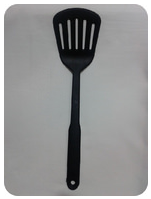1.9: Materials
- Page ID
- 52292
How does chemistry affect the clothing that we wear?
Chemistry research is often full of surprises. One such surprise came to Stephanie Kwolek of the DuPont chemical company when she was working on materials known as polymers. These chemicals had been around for a while and were being used for new types of textiles. Kwolek was looking for a strong and rigid petroleum product. She came up with a material that did not look like your average polymer; she played a hunch and had it made into threads. This new material had stiffness about nine times that of any known polymers of the time. Further research and development led to the production of Kevlar, a material now widely used in body armor. Kevlar also found a range of application in racing sails, car tires, brakes, and fire-resistant clothing worn by firefighters.
Materials
Electronics
Chemists are involved in the design and production of new materials. Some of the materials that chemists have helped discover or develop in recent years include polymers, ceramics, adhesives, coatings, and liquid crystals. Liquid crystals are used in electronic displays, as in watches and calculators. The silicon-based computer chip has revolutionized modern society, and chemists have played a key role in the design and continued improvement of these chips. The calculator shown below uses both a liquid crystal display and chips inside the device.

Superconductors
Many chemists are currently working in the field of superconductivity. Superconductors are materials that are able to conduct electricity with \(100\%\) efficiency, meaning that no energy is lost during the electrical transmission, as happens with conventional conduction materials like copper cable. The challenge is to design materials that can act as superconductors at normal temperatures, as opposed to only being able to superconduct at very low temperatures.
Clothing
The fibers that compose the materials for our clothing are either natural or human-made. Silk and cotton are examples of natural fibers. Silk is produced by the silkworm and cotton is grown as a plant. Human-made fabrics include nylon, orlon, and a number of other polymers. These materials are made from hydrocarbons found in petroleum products. Synthetic polymers are also used in shoes, rain gear, and camping items. Synthetic fabrics tend to be lighter than the natural ones, and can be treated to be more water-resistant and durable.
Materials originally developed as textiles are finding a wide variety of other uses. Nylon is found in a number of plastic utensils. Taking advantage of its strength and light weight, nylon is a component of ropes, fishing nets, tents, and parachutes.

Summary
- Chemists produce materials for electronics, superconductors, textiles, and other applications.
Review
Use the link below to answer the following questions:
- Who developed Kevlar?
- Where are liquid crystals used?
- What is a superconductor?
- What are synthetic polymers made from?

